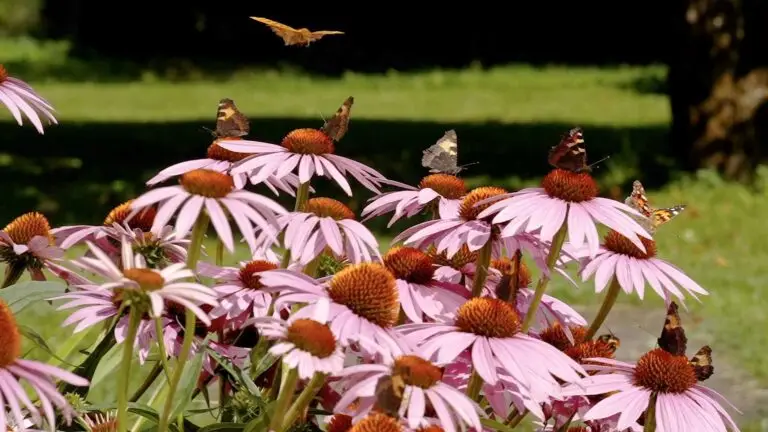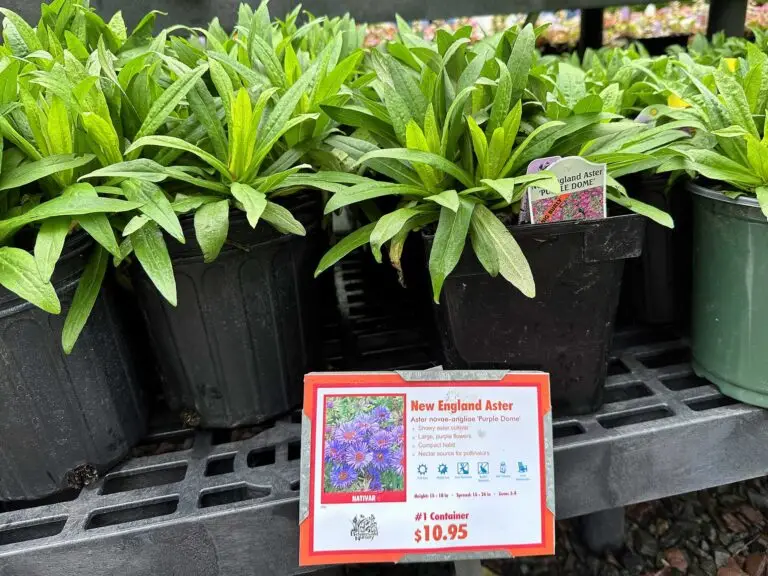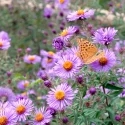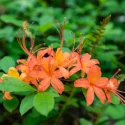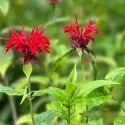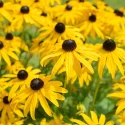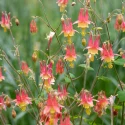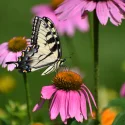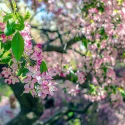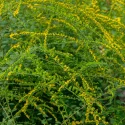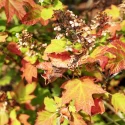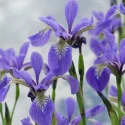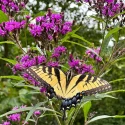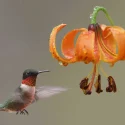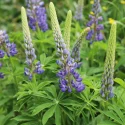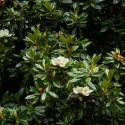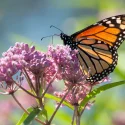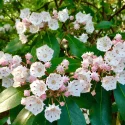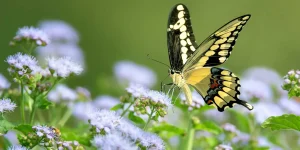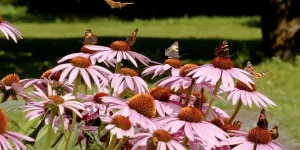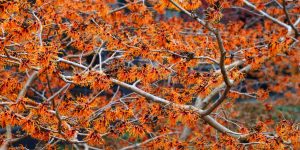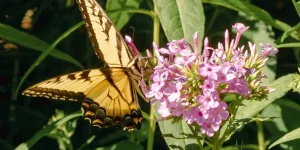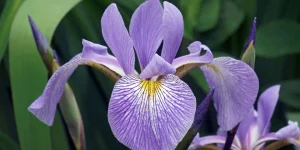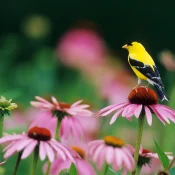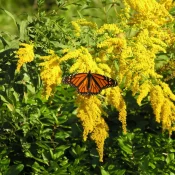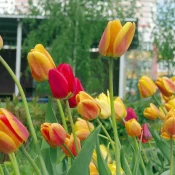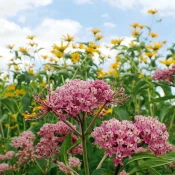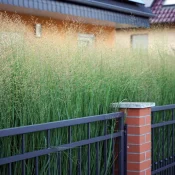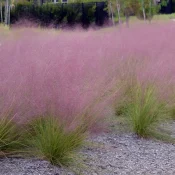Where can I buy native plants?
Sourcing native plants can be harder than it looks—most North American nurseries stock mostly non-natives. Wondering where to find native plants and seeds? We’ve put together a quick and easy list of online native plant sources and nearby community ideas so you can find plants and seeds and get gardening. Scroll on for native plant-sourcing ideas.
Before we dive into a list of resources, let’s have a moment of shared frustration.
If you’re getting into native plants, you may have already experienced a frustrating moment visiting a plant nursery and only found coneflower seeds or a few heuchera cultivars. Sadly, native plants are not as well stocked as they should be.
You’re not alone. Struggling to find native plants is a frustration that all North American gardeners face. This is because…
Native plants can be hard to find
Sadly, native plants represent the minority of plant sales in America. Only approximately 25% of plants sold in the United States are native plants. We’ve written about why this happened in another article (we partly blame Versailles). The reality is you will often show up to your local nursery—and especially a big box store—and come away empty-handed or disappointed if you’re looking to plant native.
Good news: there are places to find native plants, if you know where to look.
Here are some ideas of where to buy native plants so you can move beyond frustration and get into the garden:
Visit native-focused nurseries
You can drastically cut down on native plant disappointments by visiting a native-focused nursery. Thankfully, there are hundreds scattered around North America.
We put together 125+ in our Native Plant Nursery List to make it easy.
Find a local plant sale
Something magical probably happens in your driveable area every spring (and sometimes again in the fall): PLANT SALES.
These in-person plant sales are often organized by gardener groups in your state, county, city, or town. Most are run and organized by volunteers. Plants at these local sales most often come from gardeners themselves or specialty nurseries—you can find things that are almost impossible to find elsewhere.
The benefits of these local, IRL plant sales include:
- Expert advice: You can hear directly from master gardeners and experts on how best to care for the plants you’re buying.
- Affordability: these plant sales are often the cheapest place to buy native plants. The prices can be a fraction of what you’ll find at nurseries—we’ve seen $5 for native perennials and as low as $15 for shrubs and trees.
- Hard-to-find natives. These local plant sales often include rare plants you might never see again at a plant nursery.
A reminder—
Spring = plant sales
Don’t forget to bookmark your calendar. Although there are some plant sales in the fall as well, the bulk are hosted in the spring.
How do you find local plant sales?
Now that we’ve discussed the benefits of local plant sales, here’s how to find them. The first step is to find the local groups and follow them on Facebook and/or join their mailing lists to ensure you can attend their next plant sale event.
Local plant sale groups include:
Native Plant Society Plant Sales
Every state and Canadian province has a native plant society—here’s a list of them. Find your state or region, sign up for their mailing list, and mark your calendars for their plant sales.
Region and/or County-specific Master Gardener Sales
America and Canada also have Master Gardener groups, often holding plant sales. Master Gardeners are certified at the national level to help educate and provide community leadership. The American Horticulture Association describes Master Gardener programs as providing “intensive horticultural training to individuals who then volunteer as Master Gardeners in their communities by giving lectures, creating gardens, conducting research, and many other projects.”
How to find your Master Gardener group
Master Gardener groups are regionally organized. Google
[your county name] “master gardener”
to find the website for your area. Remember to Google nearby counties too!
Now that we’ve introduced the benefits of IRL plant sales, let’s pivot to another way to find native plants: ordering online.
Order native plants online
No surprise: there are hundreds of online sellers offering native plants and seeds. Some are small nurseries, some are individual people selling seeds on Etsy or eBay. We’ve put together a huge resource of online native plant sellers to make this easy:
Our Online Native Nursery Resource includes 100+ sources.
As you peruse sites online, we have a piece of advice.
We call it the 800-mile rule:
Local blooms, fewer glooms
Find native plants near you
Local plants and seeds—grown within 800 miles—are best suited for your garden. This also fosters cross-pollination among locally grown plants, enhancing their resilience for generations to come. Stay local for a happy garden!
The benefits of sticking within 800-miles
You get huge benefits from planting from within a 800-mile range. This ensures that the seeds and plants you’re adding to your garden have DNA that aligns with the climate, weather, and soil in your region. (Read more about why plant provenance matters.) This local benefit is why we’ve organized online native plant sellers into regions.
Let’s start to close out our resources by recapping our four sourcing ideas:
Where can I find seeds and plants?
Finding native plants can be challenging (we partly blame Marie Antoinette.) To make it easier, we’ve assembled four sourcing ideas.
Native Nursery List
300+ native nurseries makes finding one a breeze
Online Native Plant Sellers
We've included 100+ online resources to help
Society Plant Sales
Every state has a native plant society; find yours
Online Communities
Local Facebook groups are a great plant source
Finding native plants can be tricky—especially if you’re searching in big box stores. But we hope these tips inspired you to explore some new options nearby. Local sellers and events are not only great places to find native plants but also a chance to connect with others who share your passion for gardening. You might even discover your local native plant society and meet new friends along the way. Happy planting—and happy exploring!
Sources
- Nelson, Gil. Best Native Plants for Southern Gardens: A Handbook for Gardeners, Homeowners, and Professionals, (2010).
- Harstad, Carolyn. Go Native! Gardening with Native Plants and Wildflowers in the Lower Midwest. (1999), 209-210.
